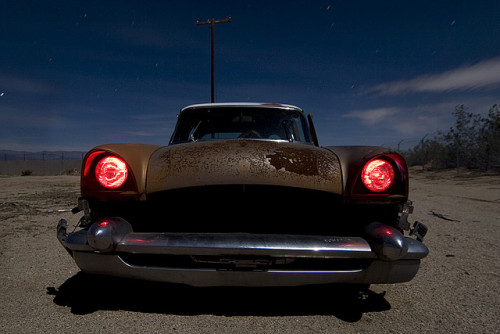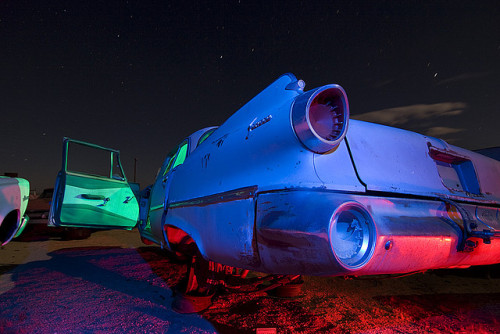
1964 Chevy Biscayne Pinner "service car" from ImpalaForums.com.
I came across this photo doing some browsing of photos of '62 Chevy Biscayne wagons (because they are oh so early sixties minimalistic, like a beautiful woman wearing only red lipstick), and just had to make a post about it. The story of this peculiar car - only three were ever made - is as follows (from the original forum post by the owner, Hotrod Dwayne):
"It started life as a 1964 Biscayne wagon, when new only three Biscayne wagons were shipped to Pinner Coachworks for this conversion. Service cars were popular mainly in the 1930's thru the 1950's, larger funeral homes who could afford one used them as the workhorse of the business. They were mainly used for removals (removing the deceased from their home is more discreet with a service car) but also used to fetch caskets from warehouses or taking chairs & flowers to the cemetery. Production numbers were very, very low for service cars, only the most profitable homes could afford yet another coach in their fleet (a coach-built cars are extremely expensive) and Pinner only built three of these in 1964 only. All three were delivered to a distributor in Brooklyn NY & sold locally.
How were they built? The rear doors were removed, then the door jambs were cut out. All the window posts were cut out and then the car was cut in half & stretched 30". Somehow they formed new sides for the car to fill the now huge void (door skins were not reused) & a single sheet of steel to fill in all the windows on each side.
They were finished off with large chrome wreaths & 3 narrow chrome spears on the window filler panels. All 3 were black with full custom made gold interiors. I do have all the coach-specific parts & the full interior. In the professional car world these three cars are still highly talked about, desired, & sought after.
Of the three mine is the only one known to exist. It was last seen in the 1980's in a driveway in Brooklyn & photographed by an enthusiast. These 5 photos have been in several coach-related books & publications through the years as they are the only photos to ever surface."
It's those kinds of awesome stories (plus a million other things, obviously) that really get my blood racing for old cars. No fucking shit. I tried to contact Hotrod Dwayne, but had to join a million random internet forums and have to now wait for my membership to be approved before I can email him and ask for continued updates. I'd really like to see how the restoration of this baby pans out.







